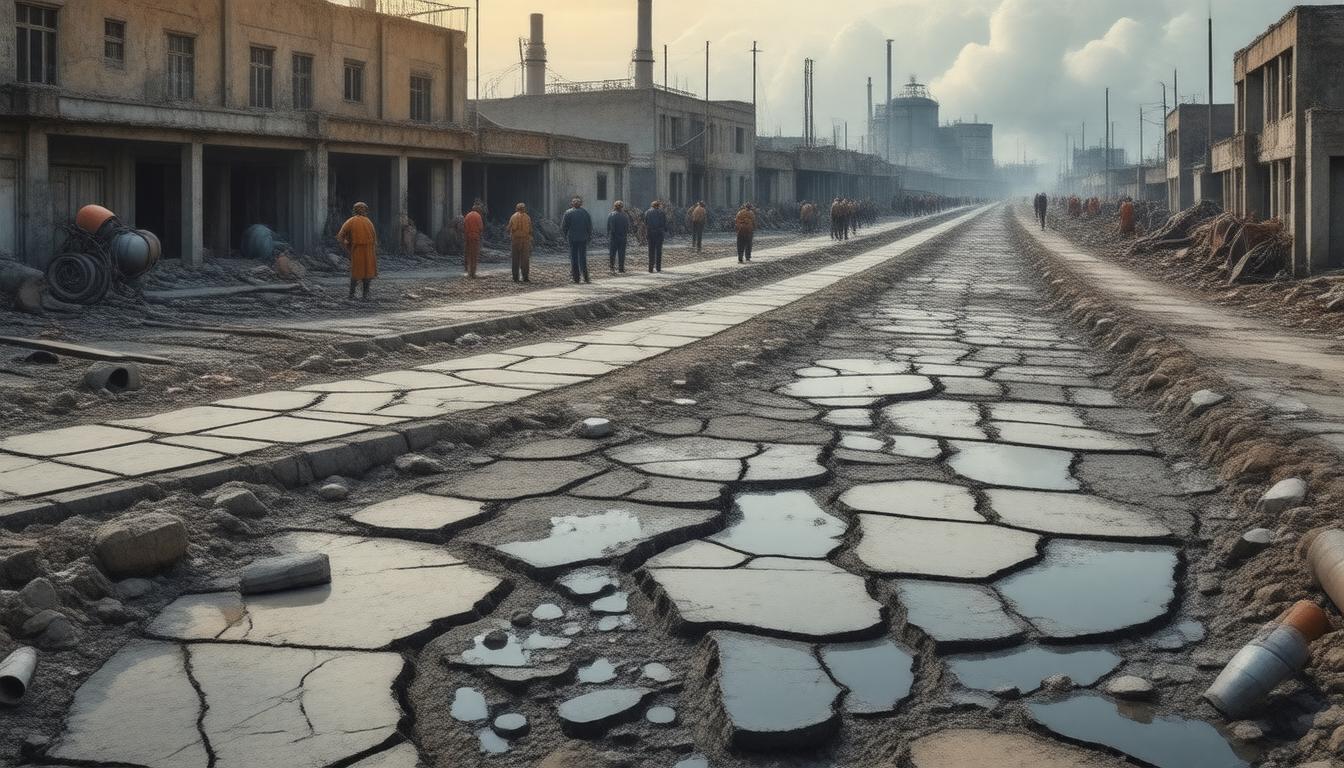

Understanding the Causes Behind a Drain Clogged in Your Home
Exploring Common Reasons for Clogged Drains
A drain clogged in your home can disrupt daily routines and lead to costly repairs if not addressed promptly. Understanding the common causes of clogs is the first step in preventing them. Household habits such as washing hair down the shower drain, pouring grease down the sink, and allowing food particles to enter the disposal can all contribute to blockages. Over time, these substances can accumulate and create a stubborn clog that impedes proper drainage.
Signs Your Drain is Clogged
Early detection of a drain clogged can save you from future headaches. Common signs of a clogged drain include slow drainage, where water takes longer than usual to empty from the sink or tub. Foul odors emanating from the drain are another red flag, indicating trapped food or debris. Additionally, gurgling sounds coming from the pipes can signal that air is trapped due to a blockage, potentially causing further issues down the line. Recognizing these signs early allows for swift intervention and resolution.
Preventative Measures to Avoid Clogs
Adopting preventative measures is essential in maintaining clear drains and avoiding the inconvenience of a drain clogged in your home. Regular maintenance, such as weekly flushing with hot water, can help break down minor build-ups before they become problematic. Installing drain screens can catch hair and food particles, preventing them from entering the plumbing system. Finally, being mindful of what goes down your drains, such as avoiding the disposal of grease and using a compost bin for food scraps, can significantly reduce the likelihood of clogs. Implementing these simple practices can go a long way in keeping your drains clear and functional.
Understanding the Causes Behind a Drain Clogged in Your Home
Exploring Common Reasons for Clogged Drains
A drain clogged can be a major inconvenience and often disrupts daily activities in your home. Understanding the common culprits behind clogged drains can help you prevent them and maintain a smoothly functioning plumbing system. Among the primary reasons for a drain clogged are household habits and the types of substances that find their way down the drain.
1. Hair Buildup: One of the most frequent causes of clogged drains, particularly in bathrooms, is hair clippings. As hair washes down the drain, it binds with sticky substances like soap residue and forms clumps, obstructing water flow.
2. Grease and Oil: In kitchens, grease, oils, and fats from cooking are notorious for causing clogs. When these substances cool down, they solidify and adhere to the insides of pipes, gradually accumulating and creating a blockage.
3. Food Particles: Food remnants, especially items like coffee grounds, pasta, and rice, can easily lead to a drain clogged. These particles often expand with water and stick to pipe walls, complicating the drainage.
4. Soap Scum: The fatty acids in soap can combine with minerals in water, leaving behind a solid residue known as soap scum. This can clog drains over time, especially when coupled with hair and dirt.
5. Foreign Objects: Small objects such as jewelry, toys, and other inadvertent items can cause an instant clog when they fall into the drain. These blockages usually require immediate attention and careful removal.
Signs Your Drain is Clogged
Recognizing the early warning signs of a drain clogged can save you time, money, and inconvenience. Here are some common indicators that your drain may be developing or already has a clog:
1. Slow Drainage: One of the initial signs of a clog is water draining slower than usual. If you notice that your sink, bathtub, or shower is taking longer to empty, it’s a sign that there might be a blockage forming.
2. Foul Odors: Unpleasant smells emanating from your drain are a major red flag. As organic matter like food particles and hair decay within the pipes, they can produce foul odors, signaling a clog.
3. Gurgling Sounds: A gurgling noise coming from your drain when water is used can indicate air trapped in the pipes due to a clog. This sound is often most noticeable in toilets or kitchen sinks.
4. Water Backup: Water backing up in sinks, tubs, or showers is a clear indication of a serious clog. This is a situation that typically requires immediate attention to prevent overflow and water damage.
Preventative Measures to Avoid Clogs
Implementing easy, regular maintenance routines can reduce the risk of dealing with a drain clogged. Here are some effective preventative measures that can help keep your drains clear and functioning properly:
1. Use Drain Screens: Installing drain screens or stoppers can catch hair, food particles, and other debris before they enter the drain. Regularly clean these screens to ensure they remain effective.
2. Properly Dispose of Grease: Avoid pouring grease, fat, or oil down the drain. Instead, let these substances solidify and dispose of them in the trash. Wiping greasy pans with a paper towel before washing also helps.
3. Flush with Hot Water: After using your sink, especially in the kitchen, flush the drain with hot water. This helps to dissolve any grease and prevents it from building up in the pipes.
4. Be Mindful of What Goes Down the Drain: Avoid putting fibrous, starchy, or expandable food items down the kitchen sink. In the bathroom, keep an eye out for hair and soap scum buildup.
5. Regular Maintenance: Occasionally clean your drains with a mixture of baking soda and vinegar followed by hot water. This natural solution helps break down minor clogs and keeps your pipes clean.
Taking these preventative tactics to heart will not only prolong the health of your plumbing system but also significantly reduce the chances of encountering a frustrating drain clogged scenario in your home.
DIY Solutions to Fix a Drain Clogged Without Professional Help
Using a Plunger Effectively
A plunger is one of the most common tools every household should have, and it’s quite effective for tackling a drain clogged. Here’s a detailed guide on using a plunger efficiently:
First, ensure you have the right type of plunger. A flat-bottomed plunger is ideal for sinks, while a flange plunger works best for toilets. Begin by filling the sink or tub with enough water to cover the plunger’s cup. This water will help create the necessary suction.
Place the plunger over the drain and ensure it’s sealed around the edges. Push the plunger down and pull it back up vigorously, creating a vacuum that can dislodge the clog. Repeat this action several times, usually around 10-15 pumps, to build pressure. After plunging, quickly remove the plunger to see if the water starts draining properly. If necessary, repeat the process until the clog is cleared. This method can be highly effective for minor to moderate clogs caused by substances like hair or food particles.
Baking Soda and Vinegar: A Natural Solution
For a more eco-friendly approach, you can rely on baking soda and vinegar, two common household items, to address a drain clogged. This natural solution is particularly useful for minor clogs and has the added benefit of deodorizing the drain. Follow these steps:
First, remove any visible debris from the drain’s entrance. Pour half a cup of baking soda down the clogged drain. After that, slowly pour half a cup of vinegar down the drain. The mixture will start to fizz, which helps break down the clog. Let the baking soda and vinegar sit in the drain for about 15-20 minutes. During this time, the chemical reaction should loosen the clog.
After waiting, flush the drain with a pot of boiling water, which will help wash away the dislodged debris. Run hot tap water for a minute or two to ensure the drain is clear. This method not only unclogs but also helps keep the drain smelling fresh.
Hydraulic Pressure Using a Drain Snake
For more stubborn clogs that a plunger or natural solution can’t handle, a drain snake (also known as a plumber’s auger) might be necessary. This tool is designed to reach deeper into a drain and physically break up or extract the clog. Here’s how to use a drain snake effectively:
Start by inserting the end of the snake into the clogged drain. Slowly push the snake further into the pipe while turning the handle in a clockwise direction. Continue feeding the snake into the drain until you feel resistance—this is likely the clog.
Once you’ve reached the clog, twist and push the snake in various directions to break up the blockage. In many cases, the snake will either break apart the clog or allow you to pull it out. After working on the clog for a few minutes, retract the snake, bringing any trapped debris out of the drain.
Run hot water through the drain to flush out any remaining particles. If the drain is still clogged, repeat the process until the blockage is fully cleared. It’s important to handle the drain snake carefully to prevent damaging the pipes.
In conclusion, when dealing with a drain clogged in your home, you have several DIY options to explore before calling a professional. Using a plunger, leveraging the natural cleaning power of baking soda and vinegar, or employing a drain snake are all effective methods depending on the severity of the clog. By following these steps, you can save time and money while keeping your drains clear and functional.
When to Call a Professional for a Drain Clogged in Your Home
Identifying When DIY Solutions Aren’t Enough
There are countless DIY remedies for minor drain clogs, but there are times when professional intervention becomes essential. Recognizing these scenarios can save you time, money, and prevent further damage to your plumbing system. One clear indication is the recurrence of clogs despite your best efforts. If you find that you are frequently dealing with a clogged drain, this can signal a more serious underlying issue within your pipes that requires a professional’s expertise.
In addition, if you encounter multiple drains clogged simultaneously, this suggests a blockage in your main sewer line, which is beyond the scope of typical DIY solutions. A significant drop in water pressure across your home, combined with sluggish drains, is another red flag that warrants a call to a professional. These issues often point to deeper, more complex problems that need specialized tools and knowledge to diagnose and fix effectively.
Professional Tools and Techniques
When you call in a professional plumber for a drain clogged in your home, they bring an array of advanced tools and methods that can effectively address and resolve even the most stubborn clogs. One of the primary techniques used is hydro-jetting. This process involves using high-pressure water to thoroughly clean the insides of your pipes. Hydro-jetting is particularly effective for removing heavy buildup of grease, mineral deposits, and other debris that can cause recurrent clogs.
Another valuable tool in the professional plumber’s arsenal is the camera inspection. With this technique, a small, waterproof camera is inserted into your drain. The real-time footage allows the plumber to pinpoint the exact location and nature of the clog, whether it’s tree roots invading your sewer line, a collapsed pipe, or a stubborn blockage that can’t be cleared with standard methods. This precise diagnostic tool helps in formulating a targeted and effective repair strategy, minimizing unnecessary work and costs.
Further, professionals might utilize an electric drain auger, or drain snake, which is a more powerful and versatile version of the handheld snakes often used in DIY attempts. These motorized augers can reach further down into your pipes and apply greater force to break up or retrieve clogs. In some severe cases, trenchless repair methods, which involve minimal digging, might be necessary to fix deep-seated issues without extensive excavation.
Choosing the Right Plumber
Finding a reliable and experienced plumber for a drain clogged in your home can feel daunting, but there are several key factors to consider that can make the process more manageable. Start by checking the plumber’s qualifications and credentials. Ensure they are licensed and insured, as this not only guarantees a certain level of expertise but also protects you from liability in case of any accidents or damage during the repair work.
Next, research their reputation. Customer reviews and testimonials can provide valuable insights into the plumber’s reliability, quality of work, and customer service. Websites like Yelp, Google Reviews, and Angie’s List are great resources for unbiased reviews. Additionally, ask the plumber for references from previous clients. A reputable plumber will have no problem providing references that can attest to their skills and professionalism.
Another important aspect to consider is their experience with your specific plumbing issue. Inquire about how frequently they handle cases similar to yours and the typical outcomes. The more experienced they are with clogged drains, particularly those involving complex issues like sewer line blockages, the better equipped they will be to resolve your problem efficiently.
Finally, get quotes from several plumbers. While cost shouldn’t be the sole deciding factor, it’s important to ensure that the pricing is transparent and reasonable. Beware of extremely low prices, as these can sometimes be a tactic to secure the job, only for additional costs to be tacked on later. Aim for a balance between fair pricing and high-quality service to ensure the best outcome for your clogged drain issue.
Taking these steps will help you select the best professional plumber for a drain clogged in your home, ensuring the problem is addressed swiftly and effectively, preventing future issues and maintaining the health of your plumbing system.
Conclusion
A drain clogged in your home can be an incredibly frustrating and inconvenient issue, but understanding the causes and knowing the right solutions can make all the difference. By being aware of the common reasons for clogged drains and the early warning signs, you can take preventative measures to keep your plumbing in good condition.
For those times when clogs still occur despite your best efforts, DIY solutions such as using a plunger, applying a baking soda and vinegar mixture, or employing a drain snake can often resolve the issue quickly and efficiently without the need for professional intervention. However, it is crucial to recognize when these methods fall short, indicating a need for professional assistance.
When DIY attempts don’t suffice, seeking the expertise of a professional plumber is essential. They possess advanced tools and techniques such as hydro-jetting and camera inspections to accurately diagnose and effectively address even the most stubborn clogs. Remember to choose a reliable and experienced plumber by checking qualifications and reviews to ensure quality service.
By combining preventative practices and timely interventions—whether DIY or professional—you can maintain a smoothly operating plumbing system and minimize the disruptions caused by a drain clogged in your home. Knowledge and preparedness are your best allies in keeping your drains free-flowing and functional.









